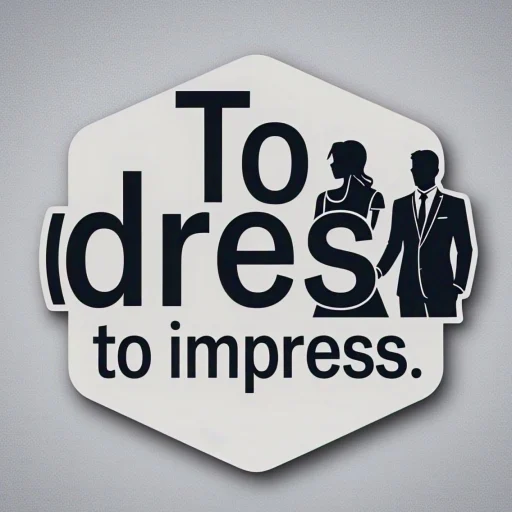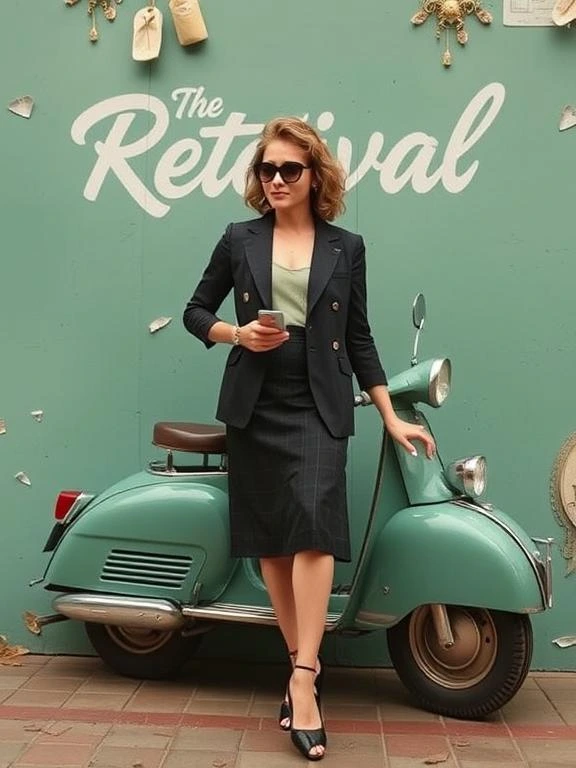Retro revival is taking the fashion world by storm, breathing new life into timeless trends and creating a bridge between the past and the present. In 2025, retro fashion is more than just a nostalgic nod to previous decades—it’s a full-on style movement that’s making waves in streetwear, formalwear, and everything in between. From vintage-inspired dresses to bold accessories, retro fashion brings elegance, fun, and versatility back into our wardrobes. If you’re wondering how to dress to impress with retro revival looks, this ultimate guide is for you.
How to Dress for Retro Day: Channeling Vintage Vibes
Retro Day is an event that encourages fashion lovers to embrace their inner vintage enthusiast. Whether you’re attending a themed party or just looking to inject some old-school charm into your day, retro fashion provides endless styling possibilities.
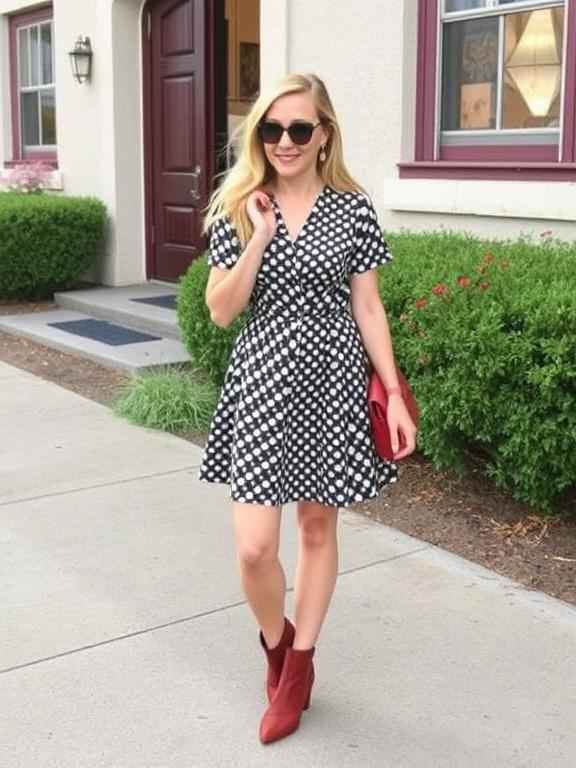
Key Elements of Retro Fashion
When dressing for Retro Day, it’s essential to understand what makes retro fashion so iconic. Retro looks are often defined by bold patterns, flattering silhouettes, and classic colors. Vintage prints like polka dots, floral designs, and stripes are staples of retro fashion, and pairing them with modern cuts can keep your outfit fresh. Classic colors such as mustard yellow, burnt orange, teal, and pastels help capture the retro vibe, but modern fabrics like velvet, silk, and denim make it wearable today.
Incorporating Retro Pieces into Your Wardrobe
You don’t have to go full vintage to rock retro revival. Start small by integrating signature retro items like a 1950s-inspired dress, a bomber jacket from the ’70s, or a pair of high-waisted trousers. Mixing these pieces with modern essentials—like a simple t-shirt or a pair of white sneakers—allows you to blend the past with the present. This versatility is part of the magic of retro fashion—it allows for both complete transformation and subtle throwback flair.
Understanding Retro Revival Fashion
Retro revival fashion isn’t just about wearing old clothes; it’s about celebrating the styles and influences of past decades, from the ’50s to the ’90s. But why has this movement gained such traction?
Defining Retro Revival
Retro revival refers to the resurgence of fashion trends from previous decades, particularly those from the ’50s, ’60s, ’70s, and ’80s. In 2025, this trend is no longer a fleeting moment; it’s firmly rooted in mainstream fashion. Modern designers, influencers, and fashion icons are constantly drawing inspiration from past styles, and the result is a dynamic blend of vintage aesthetics with modern sensibilities.
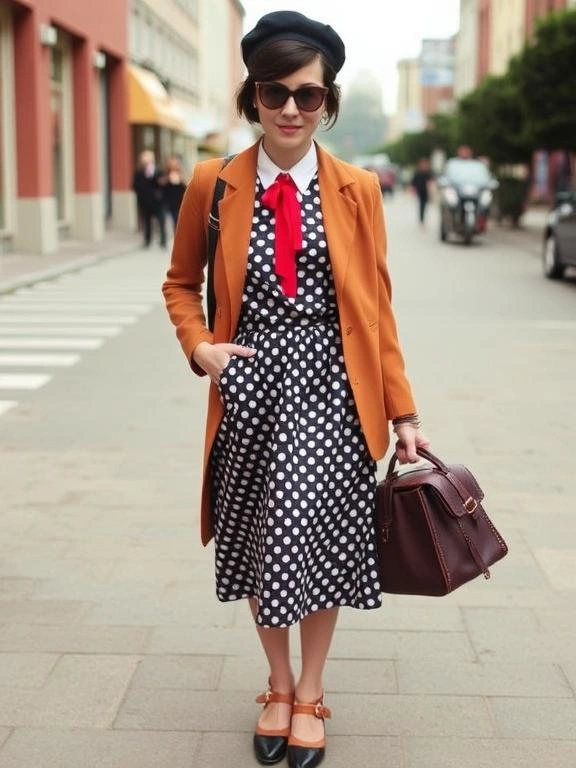
Cultural and Historical Impact of Retro Fashion
Retro revival is deeply tied to cultural and historical movements. In the 1950s, fashion was all about femininity and sophistication, epitomized by icons like Audrey Hepburn and Grace Kelly. The ’60s brought bold prints, geometric shapes, and mod style, while the ’70s offered free-spirited boho-chic styles and disco glamour. The ’80s saw the rise of oversized silhouettes, neon colors, and power dressing. Today, we borrow from each of these periods, curating looks that celebrate the past while infusing them with contemporary elements.
Fashion historian Victoria Smith notes, “Retro fashion represents more than just clothes; it’s a way to connect to the past and make it relevant today. It’s an expression of nostalgia, but also a way to reinterpret and innovate.”
Modern Retro Revival in Popular Culture
The revival of retro fashion is no accident; it’s been propelled by social media, pop culture, and modern designers. Platforms like Instagram and TikTok allow people to share their retro-inspired looks, influencing a new generation of fashionistas. From the runways of Milan to the streets of New York, retro revival fashion is everywhere. In fact, research shows that the global vintage clothing market was valued at $32 billion in 2022 and is expected to continue growing by 10% annually in the coming years.
Mastering the Art of Choosing a Retro Revival Dress to Impress
The key to dressing in retro revival fashion is choosing the right pieces. A vintage-inspired dress can make a bold statement, whether you’re attending a formal event or a casual gathering. Here’s how to find the perfect retro revival dress for you.
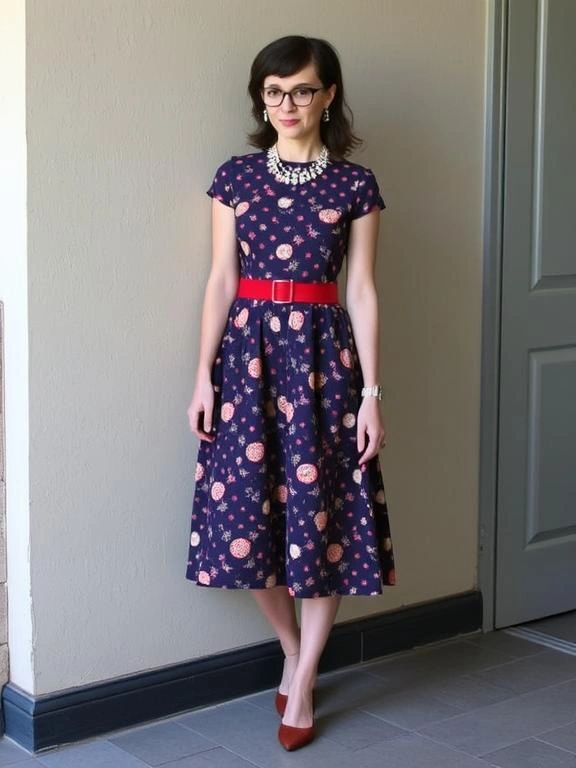
Fabric and Cut Choices
When shopping for retro dresses, fabric and cut are essential. Look for materials like velvet, silk, chiffon, or wool, which were popular in past decades and offer texture and depth to your outfit. As for cuts, A-line and midi dresses remain timeless choices that flatter most body types. A wrap dress, a staple from the ’70s, is also a great option for showing off your curves while maintaining a vintage feel.
Fit and Tailoring
For the perfect retro revival dress, ensure the fit complements your body. A well-tailored dress will capture the essence of the vintage style while ensuring comfort and wearability. Vintage clothing often had a more structured fit, which is why modern tailoring plays a crucial role in achieving a retro look with a modern twist.
The Must-Have Elements of a Retro Revival Outfit
A retro outfit goes beyond just the dress—it’s all about the details. Incorporating key elements like patterns, accessories, and shoes can elevate your look.

Patterns and Prints
Retro fashion is characterized by bold, eye-catching prints. Polka dots, stripes, plaid, and floral prints are synonymous with retro style. Mixing and matching these patterns can create a playful, fun vibe. However, balance is key—if you’re going for a bold print dress, keep your accessories and shoes simple, and vice versa.
Color Palette
The colors of retro fashion speak volumes. Mustard yellow, teal, burgundy, and burnt orange are retro staples that bring warmth and character to any outfit. Pastel hues, popular in the ’50s and ’60s, can also be paired with modern neutrals for a softer, more sophisticated retro look.
Best Retro Revival Dresses for Every Event
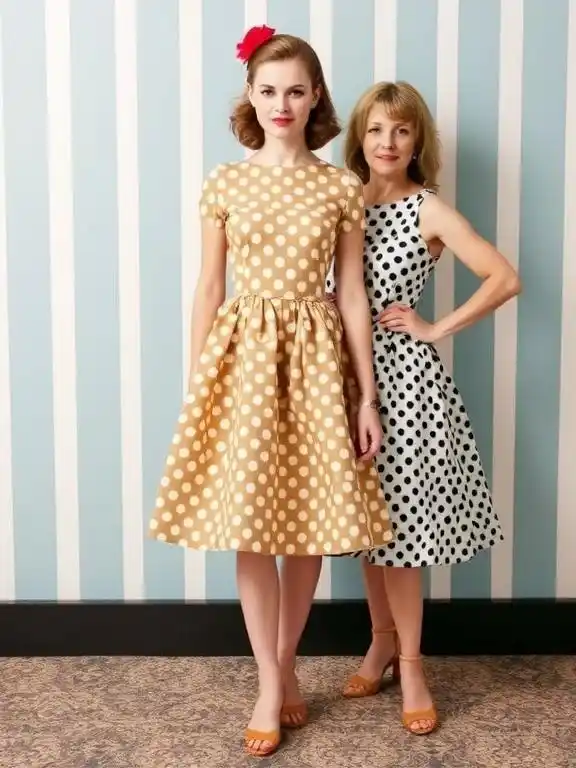
No matter the occasion, there’s a perfect retro dress waiting for you. Here’s how to dress to impress for different events with retro revival style.
Ballroom Dress to Impress
For formal occasions, such as ballroom events or evening galas, opt for a vintage-inspired gown. Think of satin or chiffon gowns with structured bodices and flowing skirts. A popular choice is the 1950s ball gown silhouette, which emphasizes the waist and creates an elegant hourglass shape. Case studies show that celebrities like Emma Watson have embraced this vintage aesthetic on the red carpet, bringing retro glamour to modern formal events.
Casual Retro Revival Outfits
For a casual day out, go for a fun, easy-to-wear retro dress like a shirt dress or a 1970s-inspired wrap dress. Pair with flats or sneakers for a relaxed yet stylish look. Vintage denim jackets, high-waisted pants, and t-shirts with retro logos are also perfect casual options that channel vintage vibes without compromising comfort.
Date Night or Special Events
For date nights or special events, go for a more sultry retro look. Consider dresses with bold necklines, metallic finishes, or asymmetrical cuts—think of the ’80s power-dressing era or the ’70s disco era. You can pair these dresses with heeled sandals or classic pumps for a head-turning ensemble.
Accessorize Like a Pro: How to Style Your Retro Revival Dress
Accessories can make or break a retro outfit. Here’s how to elevate your look with the perfect retro-inspired accessories.
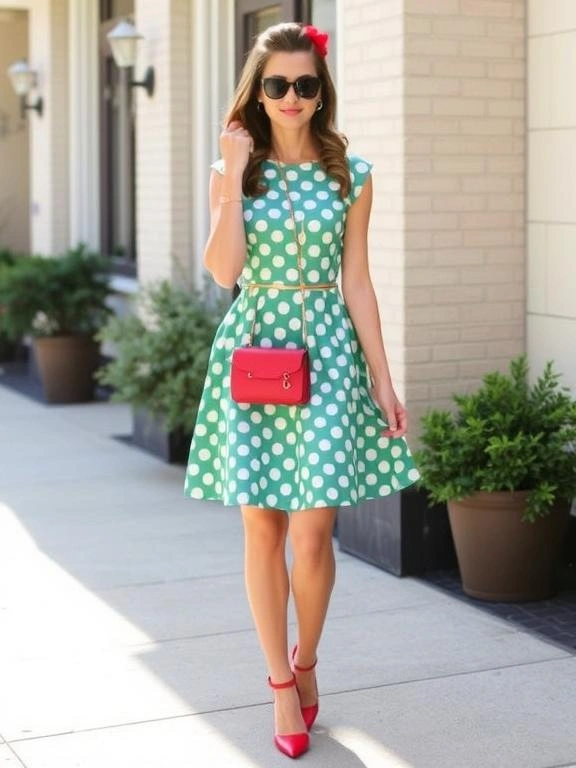
Shoes
From Mary Janes to platform heels, shoes are crucial to completing a retro look. For a vintage-inspired dress, opt for shoes that echo the era, like retro-style loafers, ballet flats, or even vintage boots. Platform heels were a signature look of the ’70s, while chunky heels defined the ’60s. Pairing your dress with the right footwear brings a cohesive feel to your overall look.
Jewelry and Hats
Jewelry plays an important role in retro styling. Think bold earrings, chunky necklaces, and statement rings. Large, chunky gold or silver accessories were the go-to for retro fashion lovers. Hats like wide-brimmed fedoras, berets, and cat-eye sunglasses are perfect for finishing off your retro look and adding a bit of flair.
Bags and Belts
Retro handbags, such as box bags or vintage-inspired clutches, add a sophisticated touch to any outfit. Belts were a huge part of retro fashion, particularly in the ’60s and ’70s. A wide belt over an A-line dress can help define your waist and give your outfit that authentic vintage feel.
Modernizing Retro Revival Style
While retro fashion is undeniably timeless, modernizing it allows you to incorporate these classic looks into your current wardrobe.
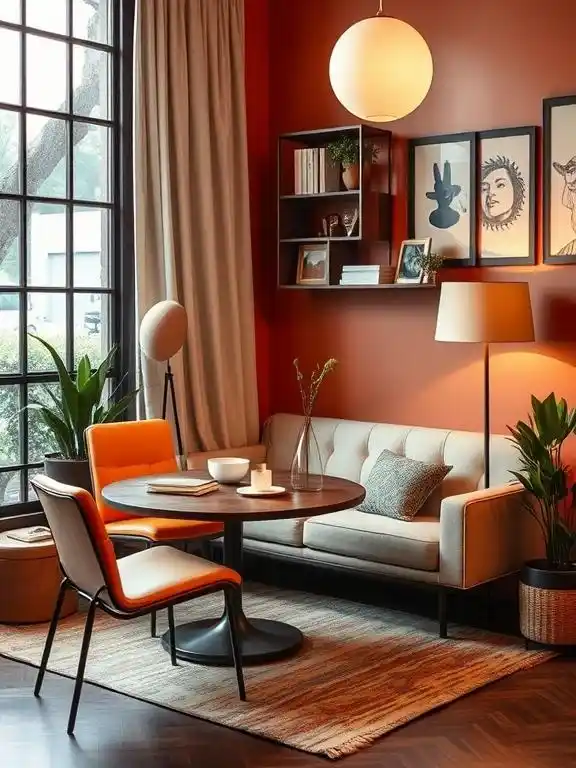
Blending Retro with Contemporary Trends
Mixing retro pieces with modern staples is the key to making retro fashion wearable in 2025. For example, pairing a vintage print dress with a modern denim jacket or layering a vintage sweater over a contemporary mini skirt can create a fresh, stylish look.
How to Keep Your Retro Look Fresh in 2025
To avoid feeling like you’re stuck in the past, incorporate modern elements into your retro look. Opt for minimal accessories, streamlined silhouettes, or modern fabrics like vegan leather to keep your outfit fresh. Celebrities like Zendaya and Florence Pugh have mastered the art of combining vintage-inspired outfits with contemporary trends, creating looks that feel both classic and current.
Why Retro Revival Fashion Remains Timeless
Cultural Nostalgia
Retro revival is about more than just fashion—it’s about connecting with the past. Many people are drawn to retro style because it evokes a sense of nostalgia, bringing back memories of a different time. Fashion is a way to celebrate and honor the past while making it relevant for today.

Sustainability in Fashion
Retro fashion is also gaining popularity due to its sustainable nature. Vintage clothing is a fantastic way to reduce waste and reuse timeless pieces. The retro.
FAQs
1. What defines retro fashion?
Retro fashion refers to styles from past decades, typically the ’50s, ’60s, ’70s, and ’80s. It includes iconic silhouettes, patterns, and accessories that reflect the trends of those eras.
2. How can I incorporate retro fashion into my modern wardrobe?
Start with statement pieces like high-waisted pants, A-line skirts, or vintage blazers. Pair them with contemporary basics like plain tees or modern shoes to balance the look.
3. What are some key retro accessories?
Cat-eye sunglasses, headscarves, chunky jewelry, vintage handbags, and retro-inspired footwear like loafers or platform heels are perfect for completing a retro look.
4. Can I mix different retro eras in one outfit?
Yes! Mixing eras can create a unique, eclectic style. For example, pair a ’70s boho blouse with ’50s high-waisted jeans for a fun, personalized look.
5. Where can I find retro clothing?
Check out thrift stores, vintage shops, online marketplaces like Etsy or Depop, and even modern retailers with retro-inspired collections.
6. How do I avoid looking costume-y in retro fashion?
Focus on subtle nods to retro styles rather than full head-to-toe vintage. Incorporate one or two retro pieces into an otherwise modern outfit for a balanced, chic look.
7. What fabrics and patterns are common in retro fashion?
Look for polka dots, florals, paisley, plaid, and geometric prints. Fabrics like tweed, corduroy, velvet, and chiffon were popular in different eras.
